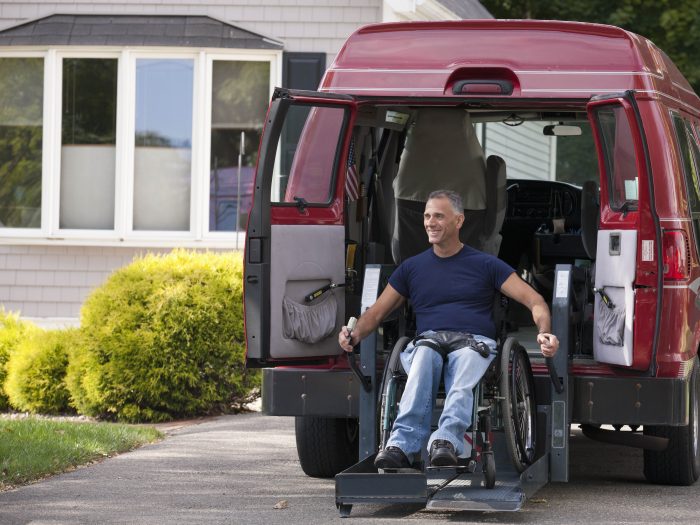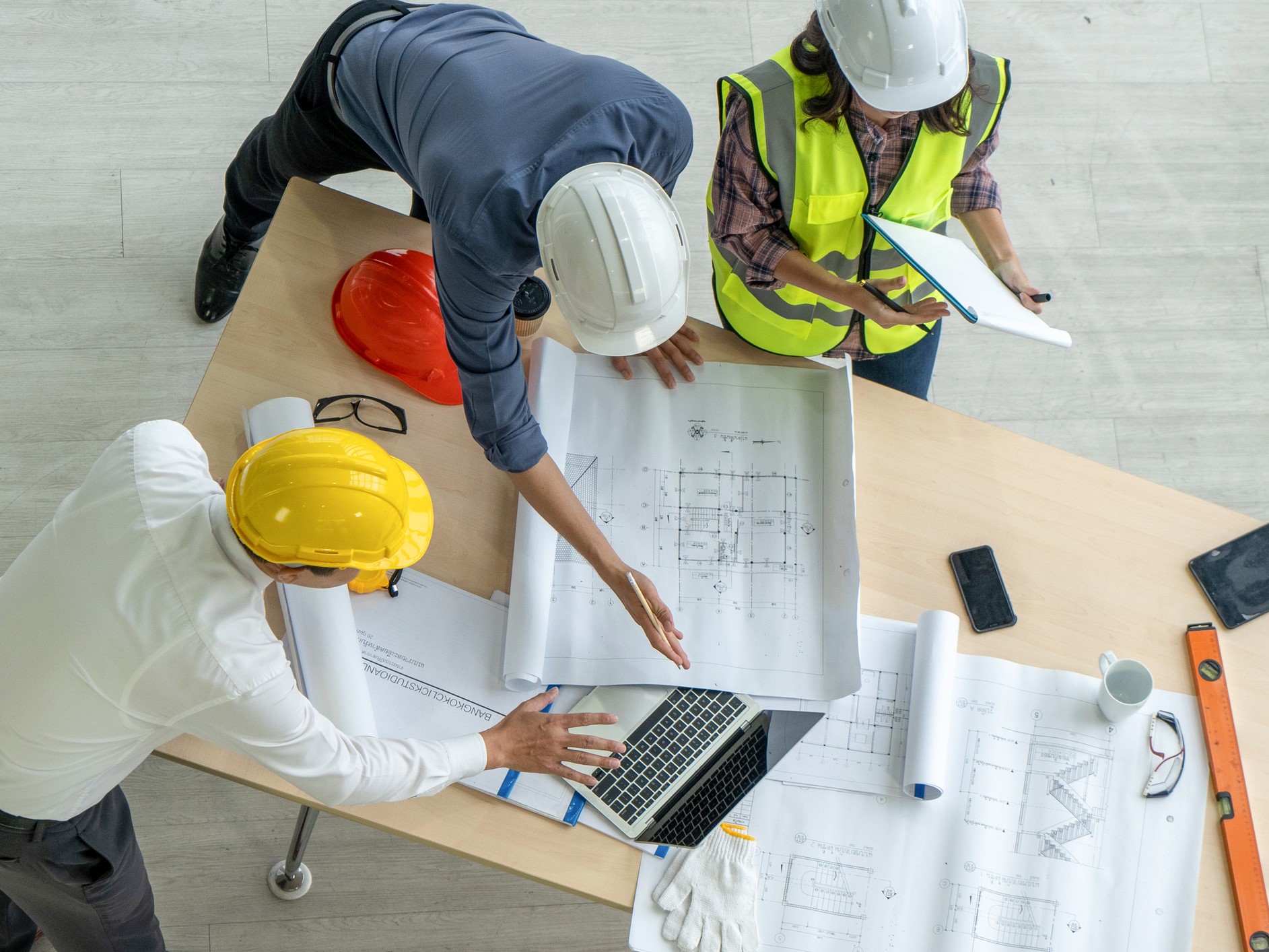Sponsored Content by HOMELINK
Why Workers’ Comp Needs a Strong Home and Vehicle Modification Partner to Provide Injured Workers with Top-Tier Care Amidst Growing Risks

After an injury, there are many layers to managing a workers’ compensation claim. There’s immediate medical intervention; the need for continued assessment after the fact; a return-to-work plan; connecting with an adjuster; keeping physicians, employers, insurers and workers all on the same page.
But what about addressing the home and transportation needs of an injured worker?
In catastrophic cases, injured workers are left grappling with a life-altering injury that requires additional change to how they operate both in a work setting and at home. Sometimes that requires home and vehicle modifications that enable the worker to get around.
“The scope of the modifications can range anywhere from the installation of a handheld shower all the way up to building a new house,” said Mark Richmann, vice president of business development for accessibility modifications at HOMELINK, a VGM company.
“That’s just on the home modification side. With vehicles, we could be installing running boards to help someone get in and out of a vehicle or even building a van with high-tech features, like assisted steering, modified controls for brakes, accelerator, turning signals and more.”
These modifications are crucial to helping the worker get back to their routine. That’s why it is imperative workers’ comp professionals’ partner with someone who understands the nuances of home and vehicle modifications related to the file and can address any growing trends in the industry. They also need to have a deep understanding of all the other products and services the injured worker is receiving. Having the clinicians and subject matter experts supporting the home and vehicle modification within the same company is also a huge advantage.
Here are some of those very trends impacting home and vehicle modification and what workers’ comp teams should be looking for in a partner to overcome the toughest of challenges.
Trend 1: Supply Chain Interruption and Uncertainty

Mark Richmann, CEAC, CAPS, Vice President of Business Development for Accessibility Modifications at HOMELINK, a VGM Company
The supply chain has faced a fair share of disruption in just the last year alone. The COVID-19 pandemic slowed down manufacturing plants, with many shutting down entirely for extensive periods of time to accommodate social distancing and new cleaning regimes.
Just earlier this year, the blockage of the ship Ever Given in the Suez Canal added another layer to supply chain disruption for the home and vehicle modification industry.
“With the number of containers on that ship, necessary production materials were delayed for vehicle and home modifications,” Richmann explained. “That can hold up the timeline of getting the product into the injured worker’s hands.”
One home modification that COVID truly inhibited this last year was appliances. Modified appliances are not easily accessible through the local home improvement store; these appliances must be ADA compliant and so are often custom-made to order. With manufacturing plants at a halt, so too were projects for individuals waiting for a stove or refrigerator.
Supply chain uncertainty goes beyond this last year’s emerging risks; natural catastrophes have also been a big contender of slowing down or even pausing supply chains.
“As far as natural catastrophes go, that just heightens this disruptive environment for supply chains,” Richmann said.
Trend 2: When the Pricing of Materials Becomes Volatile
Another trend impacting the home and vehicle modification scene is material pricing.
As Richmann explained, price and availability of building materials for home and vehicle modifications have seen pricing increases as high as 30 to 40%.
Added to that, the pricing model seems to be increasing with little warning.
“With commodity items in home modifications or construction-related items, manufacturers would provide a lead time when they anticipate raising prices,” Richmann said. “That allows contractors to buy ahead. But this last year we’ve seen rising prices with little warning. That impacted the services home and vehicle modification partners provide.”
Added with supply chain slowdowns, contingency plans had to be put in place for injured workers unable to utilize all their home and transportation needs. Temporary housing or delaying discharge from a care facility have had to come into play.
Trend 3: A Shortage of Skilled Labor
Beyond the last year and before COVID-19 entered the picture, home and vehicle modification teams were facing another hurdle: a shortage of skilled labor.
“Rate of construction was high before the pandemic hit, but the availability of skilled labor was getting hard to find because it was in very high demand,” Richmann explained.
He added that this has been on the home and vehicle modification industry’s radar as early as the 2008 recession. The construction industry was still recovering from the loss of workers. Manufacturing plants, particularly those in lumber and drywall, had to shut down during the recession. Skilled electricians, plumbers, heating and cooling professionals — all vital professions in home modifications — were still feeling the pinch even pre-pandemic.
“COVID was a compounding factor. We were able to mitigate it to an extent, but the labor shortage has been an issue for quite some time,” said Richmann.
Why Workers’ Comp Needs to Stay on Top of These Trends
Being aware of the trends impacting home and vehicle modifications is just the start to managing the challenges that could follow. But savvy workers’ compensation professionals know that in order to truly grasp the shifting landscape, they need to have an expert in the field as part of their team.
“They have to be informed and ready to make a decision,” Richmann said. “And it has to be an informed decision, as well, which is where we come in.”
At HOMELINK, the team is always monitoring the different avenues impacting modifications. In addition to keeping workers’ comp clients informed of the growing trends, HOMELINK is also working with its contractors by encouraging them to stay ahead of supply chain disruption, price hikes and other risks impacting projects.
“We have asked our contractor network to get materials lined up ahead of schedule so that we can be ready to begin a project with a workers’ comp client when they’re ready. We’ve also helped our contractors find alternative products to keep things moving,” said Richmann.
The vast manufacturing and vendor network HOMELINK is connected to enables the team to meet clients’ needs, even during stressful events like COVID.
In addition, HOMELINK understands the workers’ compensation side of the business. Workers’ comp teams are trying to get their injured workers back to their lives. HOMELINK acts as a mediator for clinical connections and the construction world, enabling both parties to unite and prosper on home and vehicle modification projects.
“We have a trained team that works directly with clients and contractors. We won’t just facilitate orders; we’re actively communicating to both sides and expressing the needs and requests from each,” Richmann said.
“We pride ourselves in being open, honest and upfront with payer partners, so that if something happens — like a supply chain disruption or a price change — they’re already informed to make the right decision.”
To learn more, visit: https://www.vgmhomelink.com/services/home-modification/.
This article was produced by the R&I Brand Studio, a unit of the advertising department of Risk & Insurance, in collaboration with HOMELINK. The editorial staff of Risk & Insurance had no role in its preparation.










